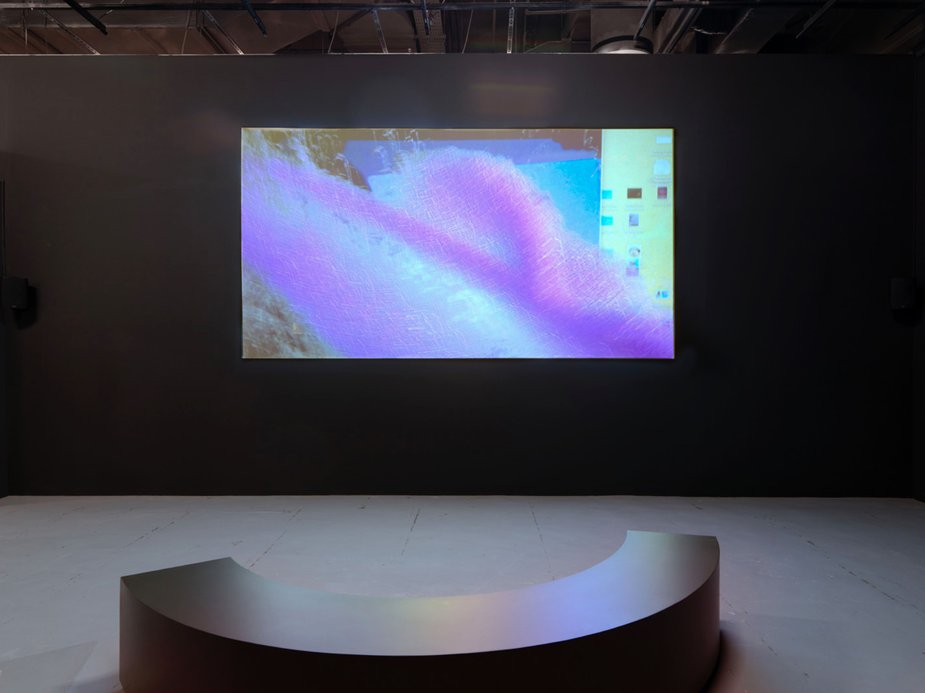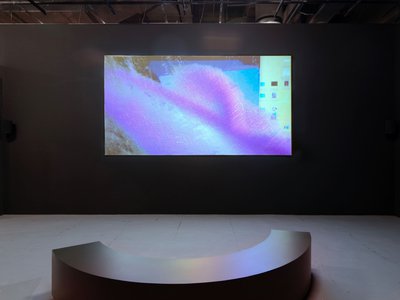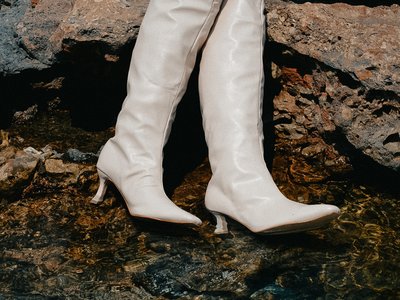Charlotte Cotton:
Victoria, it’s great to have a chance to talk to you about experimentation and your wonderful film Télévoix 1. At times, while I am watching, I feel like I am sitting in your studio, working on the desktop with you, there as you manually manipulate experimental set-ups with light and liquid, before you take us ‘outside’ into nature and we gather field recordings to bring back into the studio. Télévoix 1 is an enveloping experience. Can you tell me about what your film represents for you, and what you hope the experience is for viewers?
Victoria Fu:
Télévoix 1 is a moving image work and the title is a poetic reference to a game of telephone or ‘Chinese Whispers’ where a group is in a circle and one person whispers to the person to their right, who then tries to repeat the same phrase to the person to their right, and so on. I imagine the images playing out as ‘voices’ – something both intimate and distant – with the loss of information of each subsequent iteration. It also suggests something also completely automated or non-human, which also gets at the question of loss of the starting point in a different way.
Charlotte Cotton:
The software/pixel realm automates so many of the steps that – in analogue and chemical photography and film – are points of decision and consequence. Even though you are an artist who makes no direct distinctions between analogue and digital ideation, I am curious to know whether you think there are greater restrictions or freedoms to be found in digital processes and[/or] at what point in your creative path do you feel like you fully naturalized desktop software as a creative and experimental space for you – or, indeed, whether you would say it’s a naturalised approach for you.
Victoria Fu:
The imagery of Télévoix 1 were generated by shooting 16-millimeter film footage of celestial and spectral desktop screensavers, and also of the actual sky at different times of day. During the shooting, the negative film was sometimes exposed to light to achieve chance film flares and flashes in the footage. The negatives were then hand-processed, leaving in the dirt and hairs, etc. to intentionally interfere with the film processing, and it scratched the emulsion to create a very definite sense of textural and painterly effects. In the studio, I shot video of numerous still life set-ups incorporated the hand movements and green[screen] materials in order to composite these elements together. In the editing room, I combined the still life videos with the original 16-millimeter footage as well as clips sourced from the Internet and brought them all into the same cinematic plane. Clearly I am not only using post-production tools but also revealing their powerful role in making the ‘magic’ of an image. The video is about the various gestures and ingredients that go into the film’s own making – exposing its layers and sounds.


